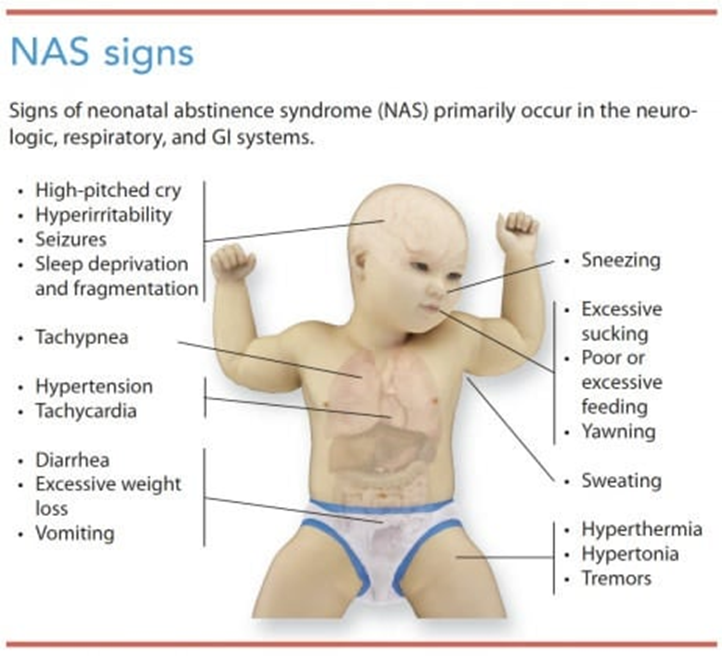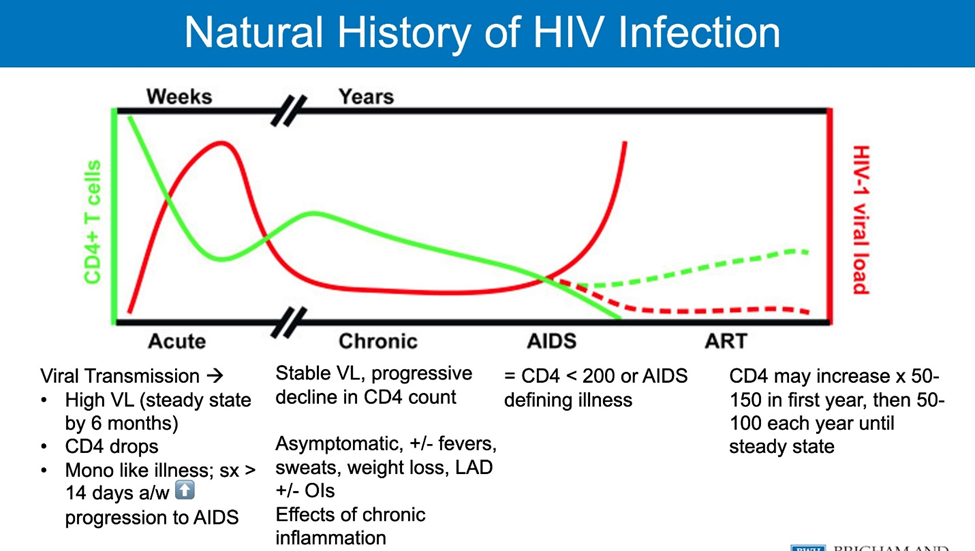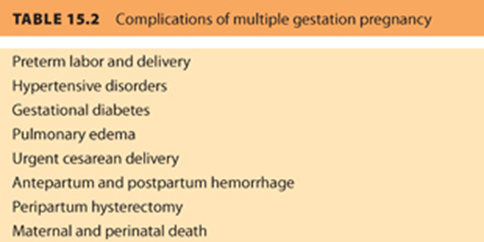A neonate born to a mother who was abusing heroin is exhibiting signs and symptoms of withdrawal. Which signs would the nurse assess? (Select All that Apply.)
hypertonicity
excessive sneezing
low whimpering cry
overly vigorous sucking
lethargy
tremors
Correct Answer : A,B,C,D,E,F
A. Hypertonicity: Neonates experiencing withdrawal from heroin may exhibit increased muscle tone, leading to stiffness or rigidity. This is often observed as hypertonicity in their limbs or overall body.
B. Excessive sneezing: Nasal congestion and sneezing are common symptoms in neonates undergoing withdrawal. These symptoms can occur due to the irritant effects of withdrawal on the respiratory system.
C. Low whimpering cry: Infants with neonatal abstinence syndrome (NAS) may have a weak or high-pitched cry, which may sound like whimpering. This cry can be indicative of the discomfort and distress they are experiencing.
D. Overly vigorous sucking: Neonates with NAS may display exaggerated sucking behaviors, often characterized by frantic or overly vigorous sucking during feeding or when provided with a pacifier. This behavior is a manifestation of their heightened agitation and irritability.
E. Lethargy: Some neonates experiencing NAS may appear excessively drowsy, fatigued, or have decreased responsiveness. Lethargy is a common symptom associated with withdrawal from heroin or other opioids.
F. Tremors: Tremors or shaking movements, especially when the neonate is disturbed or agitated, are hallmark signs of NAS. These tremors can be mild to severe and may affect various parts of the body, such as the arms, legs, or jaw.

Nursing Test Bank
Naxlex Comprehensive Predictor Exams
Related Questions
Correct Answer is D
Explanation
A. 1,000 cells/mm3:
A CD4 cell count of 1,000 cells/mm3 is within the normal range for a healthy individual. In HIV-positive individuals, a CD4 count at this level would generally indicate that the immune system is functioning well and has not been significantly compromised by the virus. Therefore, a CD4 count of 1,000 cells/mm3 would not suggest a diagnosis of AIDS.
B. 700 cells/mm3:
Similarly, a CD4 cell count of 700 cells/mm3 is also within the normal range for immune function. While this count may be lower than the typical CD4 count in a healthy individual, it is still considered relatively high and would not indicate immune compromise to the extent seen in AIDS.
C. 450 cells/mm3:
A CD4 cell count of 450 cells/mm3 is also within a range that suggests the immune system is functioning reasonably well. While it may be lower than normal, it is not at a level indicative of severe immune suppression characteristic of AIDS.
D. 200 cells/mm3:
When the CD4 cell count drops below 200 cells/mm3, it indicates significant immune suppression and an increased risk of opportunistic infections. This threshold is used to diagnose AIDS in HIV-positive individuals. At this level, the immune system is severely compromised, leaving the individual vulnerable to various infections and diseases associated with AIDS.

Correct Answer is B
Explanation
A. Oligohydramnios:
Oligohydramnios refers to a condition where there is too little amniotic fluid surrounding the fetus in the womb. It can be concerning because amniotic fluid plays a crucial role in protecting and cushioning the fetus, aiding in lung development, and preventing compression of the umbilical cord. While oligohydramnios can be a complication in pregnancy, it's not necessarily more common or specific to twin pregnancies compared to singleton pregnancies.
B. Preeclampsia:
Preeclampsia is a serious pregnancy complication characterized by high blood pressure and signs of damage to other organ systems, such as the liver and kidneys. It usually develops after 20 weeks of pregnancy and can lead to serious complications for both the mother and the babies if not managed properly. Multiple pregnancies, including twins, are considered a risk factor for developing preeclampsia. Therefore, pregnant women carrying twins require close monitoring for signs and symptoms of preeclampsia.
C. Chorioamnionitis:
Chorioamnionitis is an infection of the fetal membranes (chorion and amnion) and amniotic fluid. It typically occurs due to bacterial infection ascending from the vagina into the uterus, often during prolonged labor or rupture of membranes. While chorioamnionitis is a concern in pregnancy, it's not necessarily more common in twin pregnancies compared to singleton pregnancies.
D. Post-term labor:
Post-term labor refers to labor that begins after 42 weeks of gestation. Prolonged pregnancy beyond the due date can increase the risks of complications for both the mother and the baby, including fetal distress, macrosomia (large birth weight), and meconium aspiration. Post-term labor can occur in both singleton and multiple pregnancies, but it's not specifically more associated with twin pregnancies.

Whether you are a student looking to ace your exams or a practicing nurse seeking to enhance your expertise , our nursing education contents will empower you with the confidence and competence to make a difference in the lives of patients and become a respected leader in the healthcare field.
Visit Naxlex, invest in your future and unlock endless possibilities with our unparalleled nursing education contents today
Report Wrong Answer on the Current Question
Do you disagree with the answer? If yes, what is your expected answer? Explain.
Kindly be descriptive with the issue you are facing.
